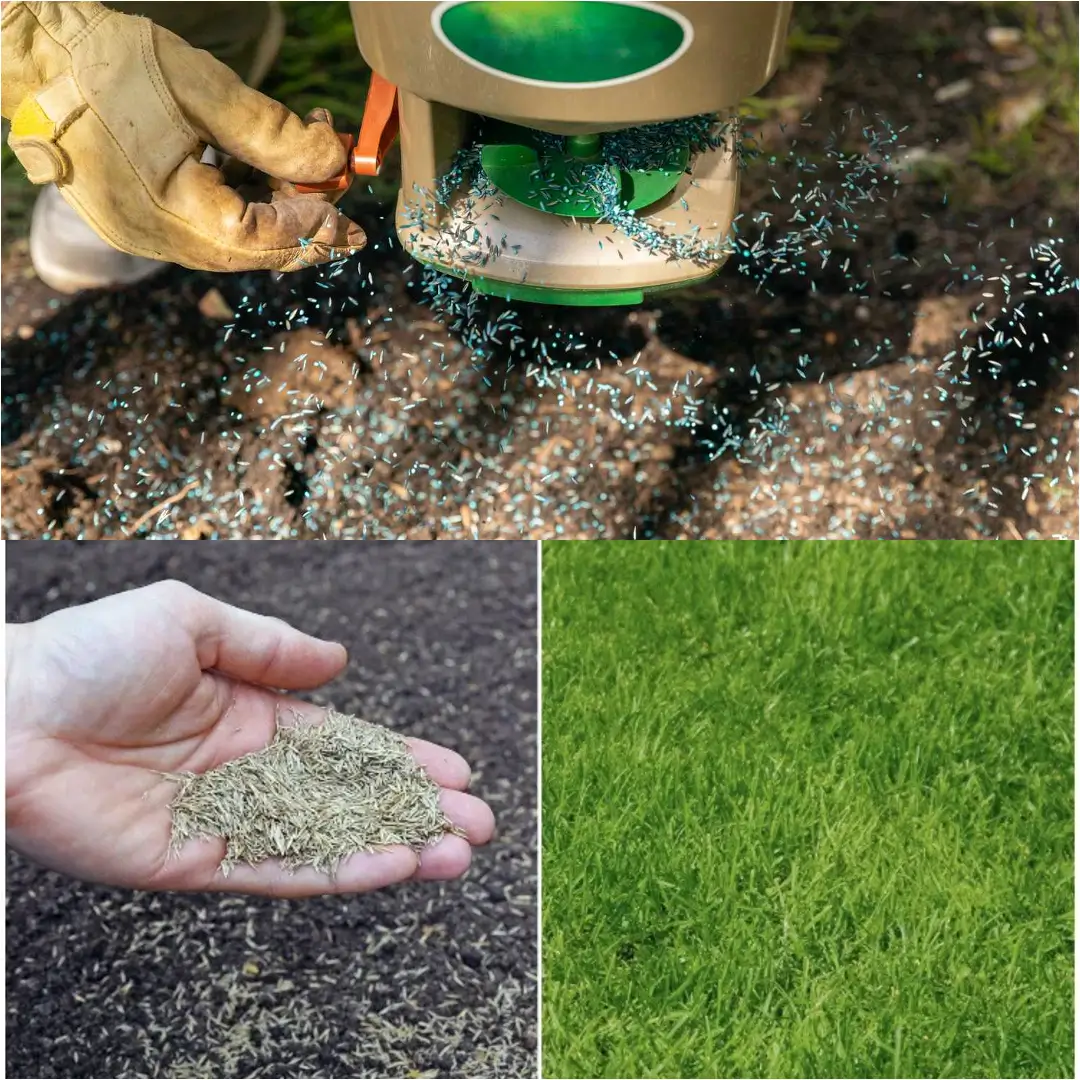Planting grass seed on hard dirt can feel like a daunting task, but with the right preparation and techniques, you can transform that stubborn soil into a beautiful, lush lawn. In this guide, we will explore how to plant grass seed on hard dirt effectively, ensuring your new grass thrives even in less-than-ideal conditions.
Understanding the Challenge: Why Is Your Ground Hard?
Before diving into the steps for planting, it’s essential to understand why your soil is hard in the first place. Knowledge of the underlying causes can make your planting process much smoother, especially when it comes to successfully planting grass seed on hard dirt.
Soil Compaction: The Culprit Behind Hard Dirt
Soil compaction occurs when soil particles are pressed tightly together, reducing the space between them. This compression makes it hard for air, water, and nutrients to reach the roots of your grass. When planting grass seed on hard dirt, understanding soil compaction is essential, as it directly affects the success of your new lawn. Several factors contribute to soil compaction:
- Foot Traffic: Pets running around, children playing, or frequent mowing can all lead to compacted soil.
- Parking: Parking vehicles on wet ground can exacerbate compaction, especially in areas where water tends to pool.
- Heavy Equipment: Construction activities or landscaping projects often result in compacted soil due to the weight of machinery.
Clay Soil: A Tougher Challenge
Another common issue is clay soil, which tends to become extremely hard when dry. Clay soils have small particles that stick together tightly, making them more susceptible to compaction compared to sandy or loamy soils. Knowing what type of soil you have is crucial for selecting the right approach to planting grass seed on hard dirt.
Step-by-Step Instructions to Plant Grass Seed on Hard Dirt
Now that we understand the causes of hard ground, let’s explore the step-by-step instructions on how to plant grass seed on hard dirt. Follow these guidelines to prepare your soil and give your grass seed the best chance to thrive.
Step 1: Run a Soil Test
A soil test is a fantastic starting point. This test helps you understand your soil’s texture and nutrient levels, providing essential information for successful planting. It’s like taking your soil’s health report card! Knowing what you’re working with will guide you in making necessary adjustments before planting grass seed.
Step 2: Clear the Planting Area
Before planting grass seed on hard dirt, you must clear the area. This means removing all weeds, rocks, old sod, and any debris. Clearing the planting area is crucial because it ensures you have a clean slate to work with, reducing competition for your new grass.
Step 3: Water the Ground Well
Watering your hard dirt before working on it can make a world of difference. Soak the area 2-3 days before you start preparing the soil. Moist soil is much easier to work with than dry, hard dirt. Aim to water 6 to 8 inches deep to ensure the ground is adequately moist without being waterlogged.
Step 4: Aerate the Soil (Optional)
If your hard dirt is compacted, consider aerating the soil. Aeration involves using a machine that pulls cores from the ground, creating holes that relieve compaction. This process is especially helpful if the hard dirt is due to heavy foot traffic or machinery. By aerating, you’re allowing air, water, and nutrients to penetrate the soil better, which is crucial for successfully planting grass seed on hard dirt.
Step 5: Break Up the Surface Crust (Optional)
Another effective method to loosen hard dirt is to break up the surface crust. This can be done using a rototiller to mix up the top few inches of soil. If you have a smaller area, you can use a shovel or garden fork. Turning over the soil helps create a better seed bed for your grass.
Step 6: Amend the Soil’s pH
Once you’ve broken up the soil, it’s time to check and amend its pH. A soil test will inform you of your soil’s acidity or alkalinity. If your soil pH is too high (over 7.4), you may need to add peat moss or elemental sulfur. If it’s too acidic (below 6.5), you can raise the pH by incorporating lime or wood ashes. This step is crucial for ensuring your grass has the nutrients it needs to grow.
Step 7: Add a Thin Layer of Organic Matter
Next, it’s time to enhance your soil further. Spread a thin layer of organic matter, such as compost, over the prepared soil. This layer will improve soil structure and help retain moisture, creating a favorable environment for your grass seed on hard dirt. Organic matter is like the secret ingredient for soil health!
Step 8: Select an Appropriate Type of Grass
Choosing the right type of grass seed is critical for success. Consider the climate in your area and the conditions in your yard. Is it sunny or shady? Do you have a lot of foot traffic? Cool-season grasses like Kentucky bluegrass thrive in cooler areas, while warm-season varieties like Zoysia prefer warmer climates. Picking the right grass is like choosing the perfect outfit for the occasion!
Step 9: Sow Seeds Across the Soil
With your soil prepared and grass seed selected, it’s time to sow the seeds! Using a grass seeder or a broadcast spreader, apply the seeds in a crosshatch pattern to ensure even coverage. This method helps avoid clumping and ensures that each seed has enough space to grow.
Step 10: Cover the Ground with Straw
After sowing your seeds, lightly cover the area with straw. Aim for a layer that covers no more than 50-75% of the surface. This layer helps keep the seeds in place and provides some protection against the elements while allowing sunlight to reach the seeds.
Step 11: Keep the Soil Moist
One of the most vital steps in planting grass seed on hard dirt is maintaining moisture. For the first few weeks after sowing, water the area regularly to keep the soil consistently moist but not waterlogged. This is crucial for germination. You want to strike a balance—too little water, and the seeds dry out; too much, and they can rot.
A Beautiful Lawn Awaits
In conclusion, planting grass seed on hard dirt may seem like a challenging task, but it’s entirely achievable with the right preparation and steps. By understanding the causes of hard ground, performing soil tests, amending your soil, and following the steps outlined above, you can cultivate a vibrant, green lawn even in tough conditions.
Remember, patience is key! Your hard work will pay off when you see those first green shoots sprouting from the soil. So grab your gardening tools, put on your favorite gardening gloves, and get ready to enjoy the lush lawn you’ve always wanted! With dedication and care, you’ll soon be able to relax in your beautiful yard, knowing you’ve successfully planted grass seed on hard dirt.
FAQs:
How to make grass grow on dirt fast?
To encourage quick grass growth on dirt, start by preparing the soil properly. Follow these steps:
- Loosen the Soil: Break up compacted dirt by aerating or tilling it. This allows air and nutrients to reach the seeds more effectively.
- Use Quality Grass Seed: Choose a fast-germinating grass seed variety suitable for your climate. For example, ryegrass germinates quickly and can establish rapidly.
- Proper Watering: Keep the soil consistently moist after sowing the seeds. Regular watering encourages quick germination, typically within 5-10 days for many grass types.
- Fertilize: Apply a starter fertilizer to provide essential nutrients for the new grass. Look for a fertilizer specifically designed for new lawns.
- Cover with Straw: Lightly cover the seeded area with straw to retain moisture and protect the seeds from birds and harsh weather.
What to put over grass seed?
After sowing grass seed, it’s essential to protect and support its growth. You can:
- Straw: Lightly cover the seeds with straw. This helps keep moisture in and reduces the chances of seeds being washed away by rain or blown away by the wind.
- Seed-Starting Mulch: Use a fine mulch specifically designed for new grass seed. It retains moisture and provides a protective layer.
- Light Soil: A thin layer of topsoil or compost (1/4 inch) can also be applied to provide additional nutrients and support seed germination.
How to turn mud into grass?
To transform muddy areas into a grassy lawn, follow these steps:
- Assess Drainage: Identify any drainage issues that may be causing the mud. Improving drainage is crucial to prevent future mud problems.
- Aerate the Soil: Aerate or till the muddy area to break up compacted soil and improve air circulation.
- Add Organic Matter: Incorporate organic matter, like compost, to improve soil structure and enhance drainage.
- Sow Grass Seed: Choose a suitable grass seed for your climate and sow it across the area. Consider using grass varieties that thrive in wet conditions, like fescue.
- Maintain Moisture: Water the area regularly to keep the soil moist but not waterlogged. Avoid overwatering to prevent further mud issues.
What is the best grass seed for dry dirt?
When selecting grass seed for dry dirt, consider drought-resistant varieties that can thrive in low-moisture conditions. Some of the best options include:
- Bermudagrass: This warm-season grass is highly drought-resistant and thrives in sunny areas, making it ideal for dry soils.
- Tall Fescue: Known for its deep root system, tall fescue is a cool-season grass that tolerates drought and can grow well in a variety of conditions.
- Kentucky Bluegrass: While it requires more moisture than some drought-resistant grasses, it has good drought tolerance once established.
- Buffalograss: This native grass is highly drought-tolerant and well-suited for dry climates, making it an excellent choice for low-maintenance lawns.


